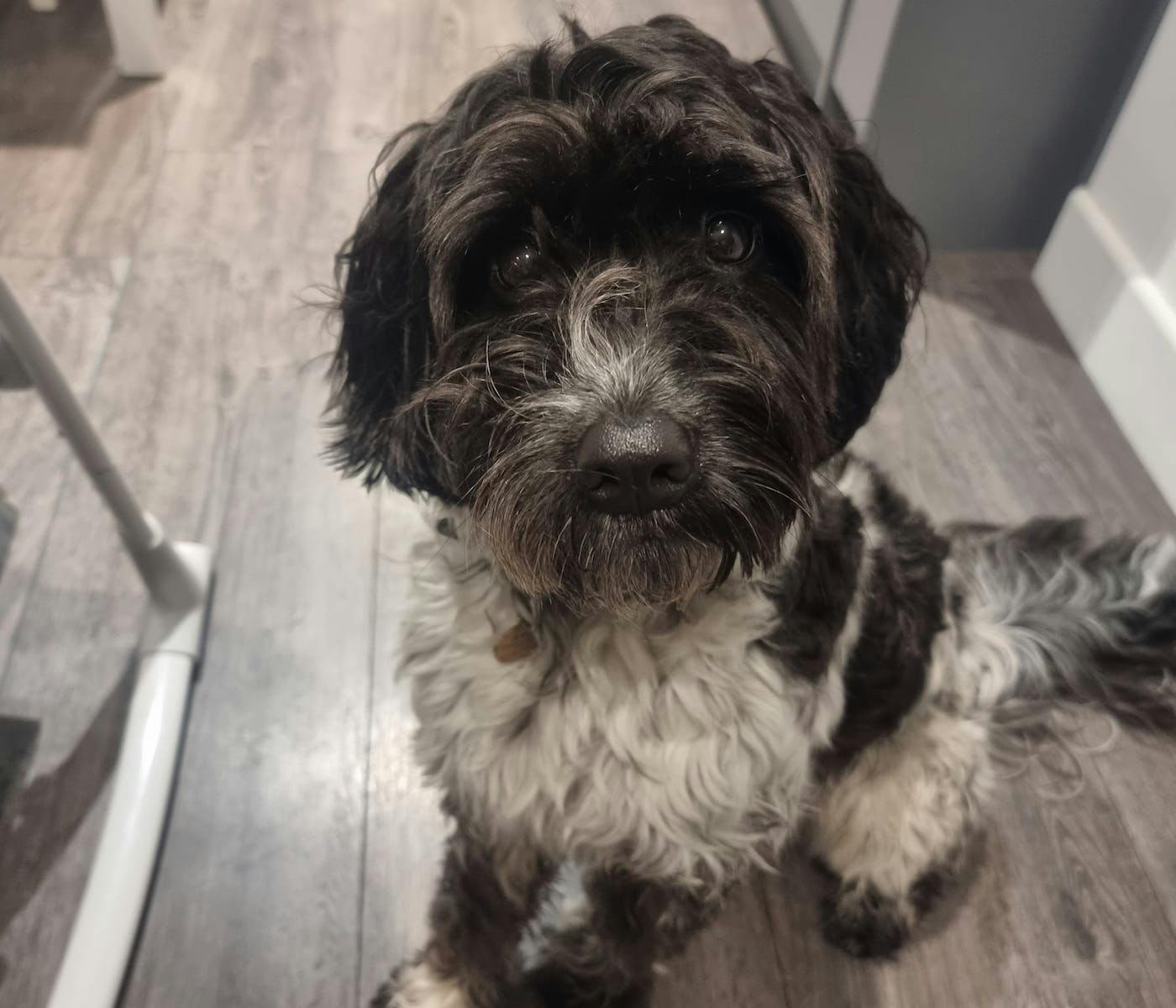How I Learned To Help My Anxious Dog
This is Ruby, my Springer Spaniel Cross
I’m Kirsty, and I own a three-year-old springer spaniel cross called Ruby. During the pandemic, I started to undertake online training courses to help me train Ruby and bring her through her ‘teenage years’ successfully. Ruby is a very clever dog, she enjoys learning and 90% of the time is a model student, but she does suffer from anxiety.
For the first five months of her life with me, Ruby didn’t show any signs of being anxious. However, following the lockdown, when things started to open up again she became very nervous around people she didn’t know as it was all so new to her.
Through the short online training courses I had completed previously, I had started to understand Ruby a lot better and we’d developed a really good bond. When she is scared she will hide behind me, so I know she trusts me. Armed with my previous learnings, I found it easier to put myself in her situation to try and understand where her fear was coming from.
Like most people, we had done a lot of walks during the pandemic. With social distancing, if someone was in the pathway we would stand aside or cross the road. We didn’t talk to strangers or go to busy places. This was clearly something Ruby had picked up on from our behaviours.
One day, we were out walking and a stranger approached us, trying to stroke Ruby. Ruby took three steps back and started barking at them. I thought it may be a one-off, but later that week it happened again. We were walking down a pathway and a couple walking towards us didn’t stand to one side, so Ruby stopped and started barking until they had walked away.
Even as a dog lover, I know how intimidating a dog barking at you can be, so this was a behaviour I wanted to correct as soon as possible. I chose to undertake some training myself to help me understand why the behaviour was happening.
Finding The Right Dog Training Course
If you Google dog training there are a lot of different courses available, from the very cheap to the very expensive and all using different methods of training. I knew I wanted to do a course which promotes positive reinforcement, as this was how I had taught Ruby as a puppy. I also knew I didn’t want to do a very expensive course, I didn’t plan to become a professional dog trainer, and I would only be using the skills on my own dog. What I really wanted to understand better was body language. I wanted to know when Ruby was scared or worried about something so I could rectify the situation before it got out of hand.
There were a number of courses that discussed body language within the training, but there was one diploma which had an entire module dedicated to canine language. The module included understanding facial expressions, ear/eye/tail positions and how you can understand cues that a dog may be scared or anxious. I looked at reviews of the course, and they all seemed very positive. The school itself also had courses on first aid, grooming and nutrition (all of which I’ve since completed). What I really liked was the school was focused purely on canines and included one-to-one support and assessments after each module which really ensured you understood what you were learning.
How Did The Dog Training Course Help With This Behaviour?
As we all know, dogs have a better sense of smell and eyesight that humans. This meant Ruby could always sense there was someone walking towards us before I was able to realise. This course didn’t give me a dog’s senses (although that would be an excellent superpower!) but it did allow me to recognise when Ruby had sensed something.
Ruby had very obvious signs when she was worried, which are what I learnt to be classic dog signs. These included:
- A stop with paw up
- Nervous shakes
- Lip licks
- A straight tail
Before doing this course, I could have noticed these signs but thought they were for something else and I didn’t necessarily associate them as being stress signals.
Now, when I spot these signs, I am able to either put Ruby back on her lead, recall her or distract her before she sees the ‘scary’ thing. We will often sit and wait for the person to walk past with her on a loose lead whilst I feed her treats. This is really important to do so she can understand what she thought was really scary isn’t. If she wants to leave she isn’t on a tight lead, so she trusts me to make the right decision.
What Else Did The Course Cover?
As well as canine language, the course included a number of other modules on training. One particularly interesting module was on training puppies. The module covered:
- How to socialise them
- Crate training
- House training
- Getting through the first night
This was particularly useful as following the lockdown a number of my friends and family got puppies, with puppy training classes fully booked after the lockdown boom, I was able to share my knowledge and learning with them whilst they waited for spaces to become available.
The course I completed was really interesting and definitely encouraged me to continue learning. Whilst I don’t plan on becoming a professional dog trainer, I do want to be the best dog owner I can be for Ruby. Through completing courses like this I can understand her needs better which means she leads a happier and more fulfilled life, knowing that I am there to protect her rather than the other way round.
